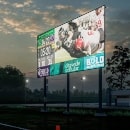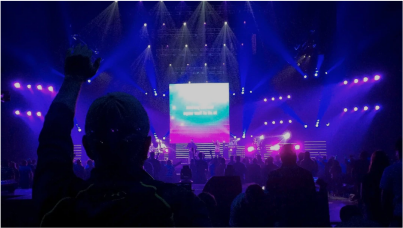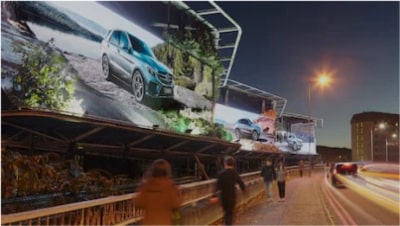Billboards Digital vs Print
Are you considering offering billboard out-of-home (OOH) advertising? Excellent!
Now is a great time to do it. While other traditional advertising media (television, print) are declining, OOH advertising has been agile. "OOH ad spending in the U.S. is expected to increase from an estimate of 9.2 billion U.S. dollars in 2016 to just over 10.9 billion U.S. dollars in 2020," according to Statista, and, " Billboards have the highest reach amongst OOH advertising types in the U.S. “about 80 percent of American consumers stated noticing a billboard ad in 2016."
OOH advertising is where the people are - along commuting routes, in shopping centers and airports, on structures people see every day.
And the rise of digital OOH has allowed marketers to combine OOH with the latest technology for an even better customer experience: mobile.
Knowing the rise of digital, you may be wondering which is better for your business: traditional print billboards, or the relatively new digital advertising boards?
The answer? It depends.
Costs
Yes, print billboards are going to be less expensive than digital billboards. However...
Digital LED billboards allow you to show multiple messages on one billboard. Print billboards only allow space for one message at a time. Shifting from one piece of content to the next also attracts attention.
Also, print billboards require you to hire personnel to go up to the screen, remove the previous content, and put up the new. For digital billboards, adding or deleting content is as simple as logging into your content management system and clicking on a few buttons.
Where print billboards may save you money on purchasing price and installation initially, digital billboards will allow you to make more money from advertising in the long run.
Easy to See
For both print and digital billboards, graphic design is key. Even the best marketing messages accomplish nothing if they can't be viewed.
But when you have good content in place, both print and digital billboards can be illuminated to make viewing the messages easy in all lights.
The LEDs in digital billboards provide the illumination - and the brightness can be dimmed to conserve energy at night when the LED screen isn't competing with sunlight.
Illumination for print billboards is accomplished through billboard lights.

Maintenance
Once upon a time, digital billboards required a lot of maintenance. If one LED burned out, you had to call out a technician. If the billboard overheated, you had to call out a technician. Your billboard might have been down for hours - or even days.
That is no longer true. For the burning out issue, you can buy billboard panels with cabinet-less design. These panels can operate without having air-conditioning units attached to them. This, in turn, helps lower electrical costs.
Legal Issues
Zoning laws have made digital billboards illegal in some areas. Generally, the reasons cited are:
- Light pollution - residents of the area feel digital billboards are too bright at night, even when dimmed
- Distraction to drivers - many people believe the changing content of digital billboards pull drivers' attention from the road for too long
- Energy use - there are concerns that, despite the innovations in LED lighting regarding energy conservation, digital billboards use too much electricity
What's Your Choice?
Digital billboards may seem expensive at first, but if your goal is to sell advertising space, it offers you more chances to do so. However, this is all a moot point if the area you want to advertise in doesn't allow digital billboards at all.










